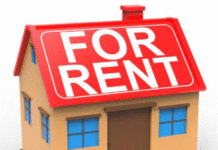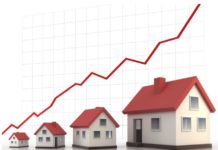Guest Post
Over the next several weeks, I will be having a guest contributor publishing articles on my behalf. Nate O’Neil is a former Division 1 college basketball player who after college spent time traveling the world playing against the Harlem Globetrotters. After stepping away from sports, he built a lucrative portfolio of cash flowing single family homes across 7 states while working a corporate job and raising 2 children with his wife. A resident of Northern California, he has also invested in several passive real estate syndication deals, including one internationally. His goal is to share his learnings and experiences with others so that they can start or accelerate their real estate journey and ultimately achieve financial freedom. Without further ado, please help me welcome Nate!
-David
Merriam Webster’s definition of “Athlete”
a person who is trained or skilled in exercises, sports, or games requiring strength, agility, or stamina
Having been both an athlete and a real estate investor, I have found there to be many parallels between sports and real estate investing. The real estate game may not require physical strength, agility or stamina, but it does require mental toughness and the proper mindset. Over a series of articles, I will be sharing my experiences during my pursuit of financial freedom with you. My goal is for you to learn things about real estate and financial freedom that ultimately earn yourself what all of us as athletes want – MORE PLAYING TIME.
Growing up, I had never thought that I would become a real estate investor.
I was very fortunate to parlay my college basketball career into a gig playing hoops against the Harlem Globetrotters. This “job” allowed me to do 3 things I was good at: traveling the world, shooting jump shots, and playing no defense. Despite my passion for athletics, I soon realized that I had no way of supporting myself financially by being an athlete. As a result, I fell back to the traditional path and went back to graduate school to kickstart a corporate career. Within 6 months of starting my first corporate job, I was transferred from the East Coast to the Bay Area in California.
Before moving to the West Coast, I knew that housing in the Bay Area was expensive. But that did not prevent me from experiencing some very real sticker shock. Fortunately, my wife (also a college athlete and corporate rockstar) and I did not have any student loans. We were living well below our means and were earning enough income to qualify for home ownership. In 2002, we purchased our first primary residence which was a pre-construction townhome in a brand new development. It is this action that introduced us to the power of real estate. Before the home was finished being constructed, it increased in value. In the 3 years that we lived in the property, its value increased by over 60%!
Good News, Bad News
Having experienced first hand the power of real estate, my wife and I knew we had to do more. We knew we had to become real estate investors. The appreciation we experienced in three years was almost equal to our combined corporate salaries over that same three year period. The bad news was that while rents were high, they weren’t nearly high enough to justify buying more property in our area. Not only would the properties not cash flow, but a large amount of capital would be required to get more property in a responsible way. How were we going to actually harness the potential of real estate investing?
Alternative Markets – Out of State
With Bay Area housing prices continuing to rise in the early to mid 2000’s, affordability became an issue for many and therefore California residents started moving out of state to places like Oregon, Washington, Idaho and Colorado. This market trend forced us to start looking to replicate our real estate investing model out of state. We bought our first true investment property in 2004, which was a 3 bedroom, 2 bathroom new construction home in Colorado.
Good News, Bad News, Good News
There was a strong sense of satisfaction after receiving our first rent check. Having three streams of income and only two jobs was empowering and exhilarating. Over the next few years, having hired a property manager to handle our property, we learned what it was like to be a landlord. The lessons we learned from being a landlord proved to be even more valuable than the home and its cash flow.
We also made some other life changes during this time frame between 2004-2008, having two children and moving into a new primary residence.
Then the economy tanked.
Our country experienced the worst economic downturn since the great depression and with it the value of our rental home in Colorado dropped by 16%.
Not good.
But was it really so bad? Despite the property value dropping, our rents did not drop and in fact increased, meaning we increased our cash flow. Not only did this “bad news” solidify in our minds the power of real estate investing, but as I started to analyze the marketplace, with it’s historically low interest rates and an increasing number of foreclosures on the market, my spreadsheets were spitting out some very attractive numbers.
We bought our 2nd investment home in Colorado in 2009. Feeling confident and wanting to diversify markets we proceeded to acquire rental properties in six more states.
Today, we continue to own all of the properties we acquired during that time and plan on holding them for the long term. Stay tuned for a future article explaining why.
Principles, Concepts & Fundamentals
My real estate journey thus far has taught me great lessons on how to build wealth and make money at this game. As I compare my learnings in real estate to the great lessons I learned as an athlete, I have observed that being successful at both requires you to break down the potential complexities into a series of basic principles, concepts, and fundamentals. The key then becomes to get very good at these basics.
I look forward to sharing more with you in my next article where we will examine how to choose the real estate investment model that is the best fit for you!













